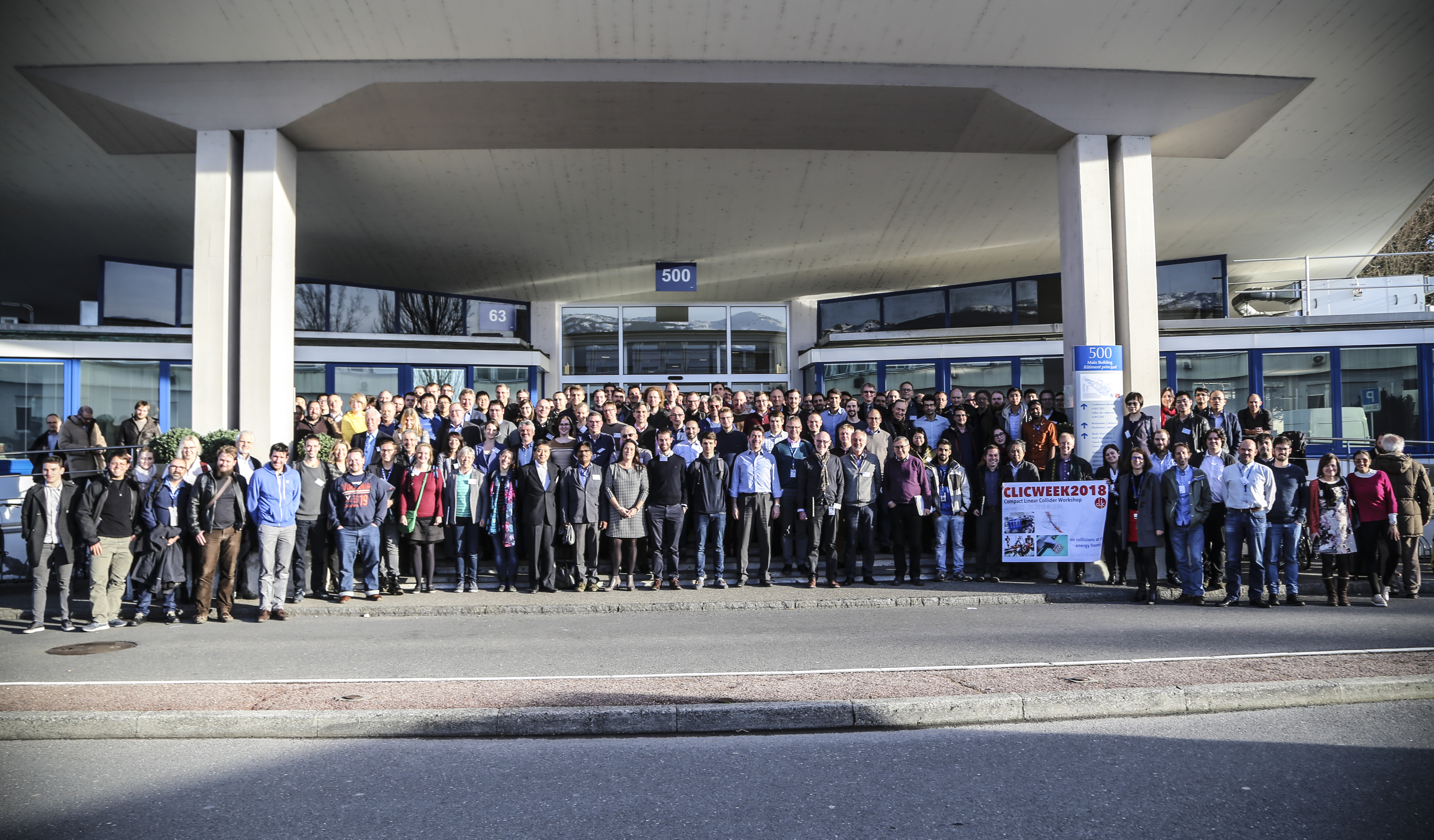The Compact Linear Collider (CLIC) workshop is the main annual
The participants of the 2018 CLIC workshop outside CERN’s main building. Image credit: M Volpi
gathering of the CLIC accelerator and detector communities, and this year attracted more than 220 participants to CERN, 22-26 January. CLIC is a proposed e+e- linear collider, envisaged for the era beyond the High-Luminosity LHC (HL-LHC), that would operate a staged programme over about 25 years with collision energies at 0.38, 1.5, and 3TeV. This year, the meeting focused on preparations for the update of the European Strategy for Particle Physics.
The initial CLIC energy stage is optimized to provide high-precision Higgs boson and top-quark measurements, with the higher-energy stages enhancing sensitivity to effects from beyond-Standard Model (BSM) physics. Following a 2017 publication on Higgs physics, the workshop heard reports on recent developments in top-quark physics and the BSM potential at CLIC, both of which are attracting significant interest from the theory community.
Speakers also reported extensive progress in the validation and performance of the new detector model. To ensure that the performance meets the challenging specifications, a new approach to tracking has been commissioned, and the particle flow analysis and flavour-tagging capabilities have been consolidated. Updates were presented on the broad and active R&D programme on the vertex and tracking detectors, which aims to find technologies that simultaneously fulfil all the CLIC requirements. Reports were given on test beam campaigns with both hybrid and monolithic assemblies, and on ideas for future developments. Many of the tracking and calorimeter technologies under study for the CLIC detector are also of interest to the HL-LHC, where the high granularity and time-resolution needed for CLIC are equally crucial.
For the accelerator, studies with the aim of reducing the cost and power have particular priority, presenting the initial CLIC stage as a project requiring resources comparable to what was needed for LHC. Key activities in this context are high efficiency RF systems, permanent magnet studies, optimised accelerator structures and overall implementation studies related to civil engineering, infrastructure, schedules and tunnel layout.
A key aspect of the ongoing accelerator development is moving towards industrialisation of the component manufacture, by fostering wider applications of the CLIC 12 GHz X-band technology with external partners. As a new initiative, the CLIC Workshop saw the kick-off meeting for the CompactLight project recently funded by the European Commission’s Horizon 2020 programme [ref to CC article on CompactLight]. This three-year project brings together leading European institutions and companies to design an optimised X-ray free-electron laser based on X-band technology, to pave the way for significantly more compact and power-efficient accelerator facilities.
2017 also saw the realisation of the CERN Linear Electron Accelerator for Research (CLEAR), a new user facility for accelerator R&D whose programme includes CLIC high-gradient and instrumentation studies [ref to CC article on CLEAR]. Presentations at the Workshop addressed the programmes for instrumentation and radiation studies, plasma-lensing, wake-field monitors and high energy electrons for cancer therapy.
During 2018 the CLIC accelerator and detector and physics collaborations will prepare summary reports focusing on the 380 GeV initial CLIC project implementation as inputs for the update of the European Strategy for Particle Physics, including plans for the project preparation phase in 2020-25. CLIC Week 2018 takes place January 22-26 at CERN.
Share

